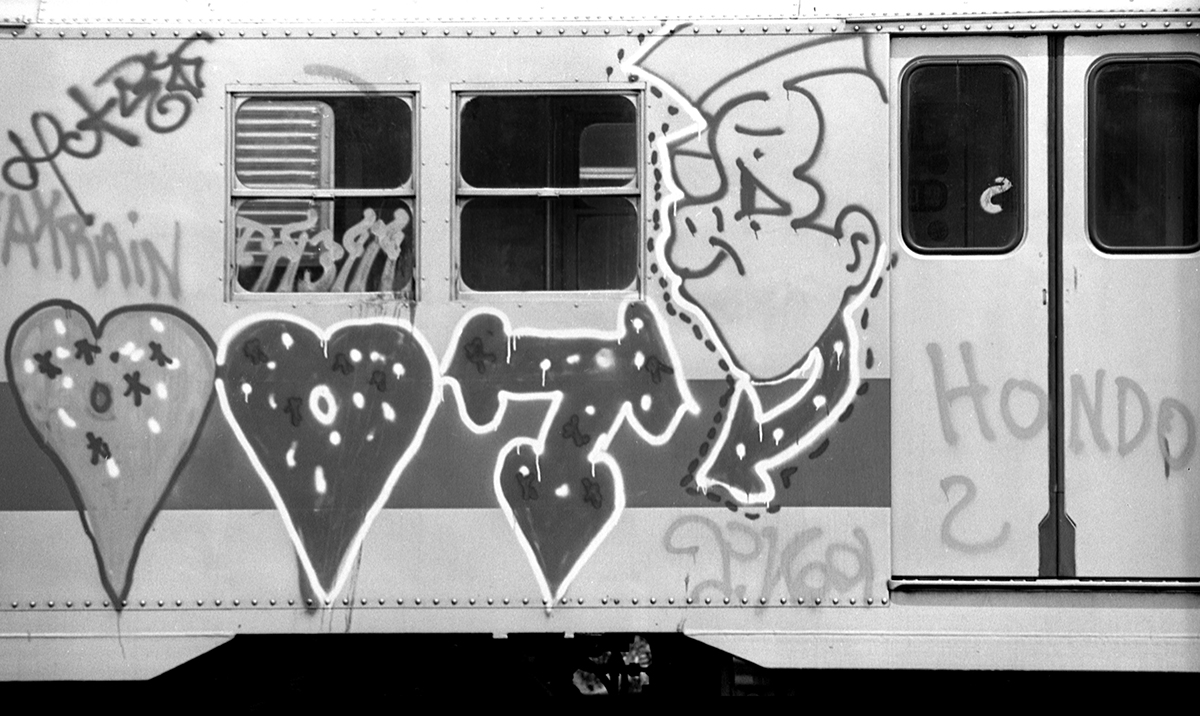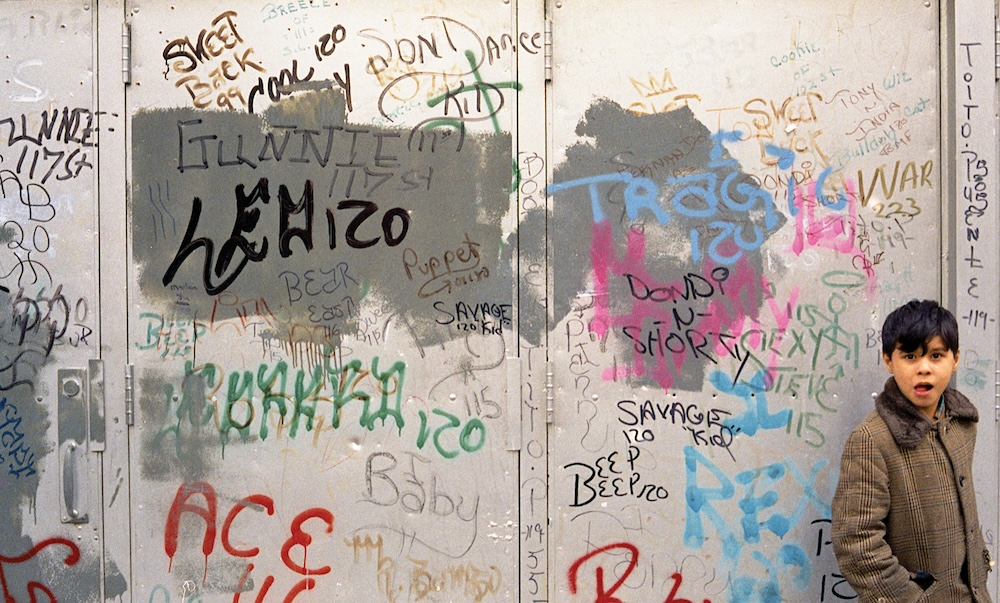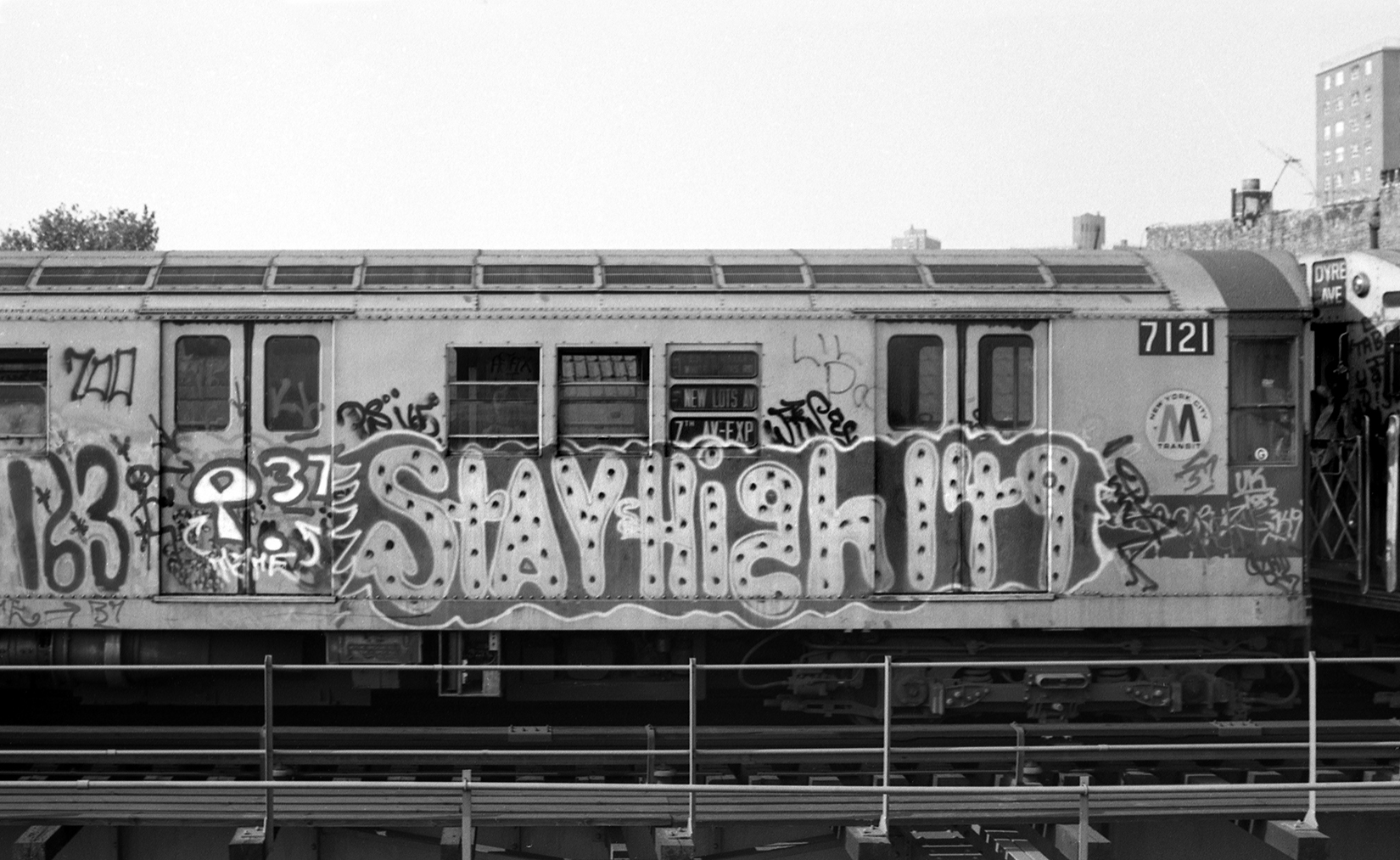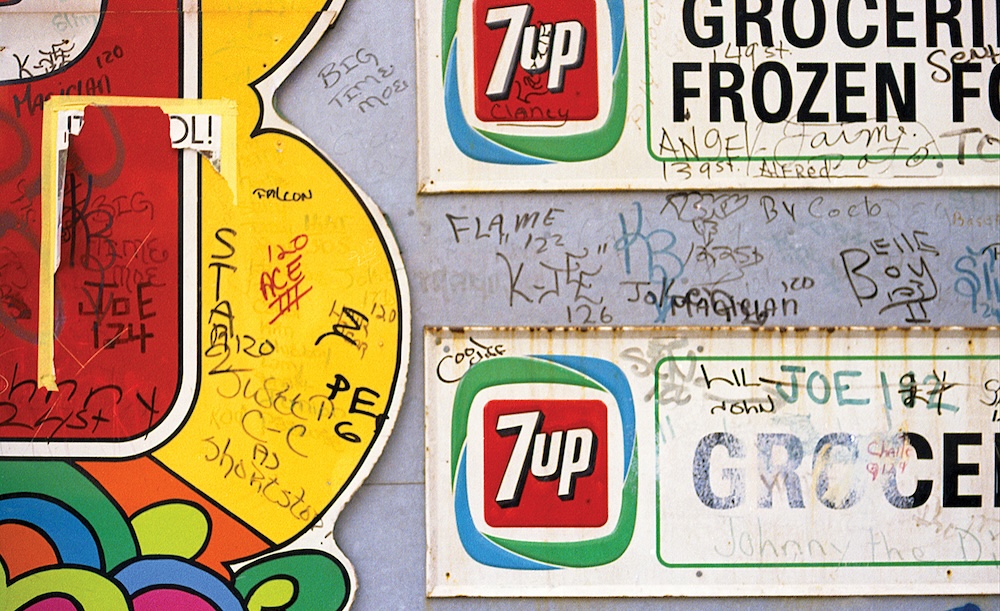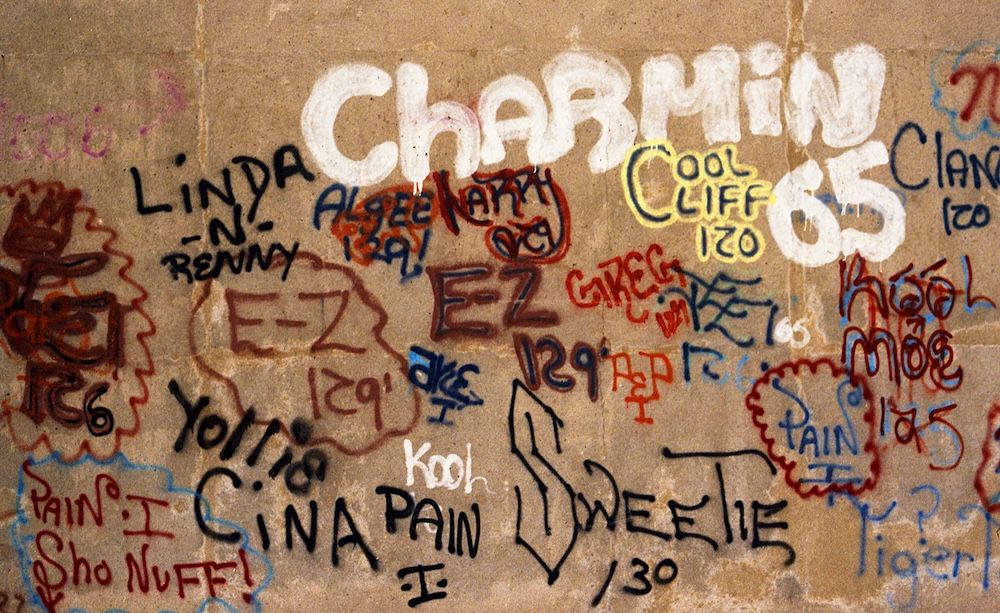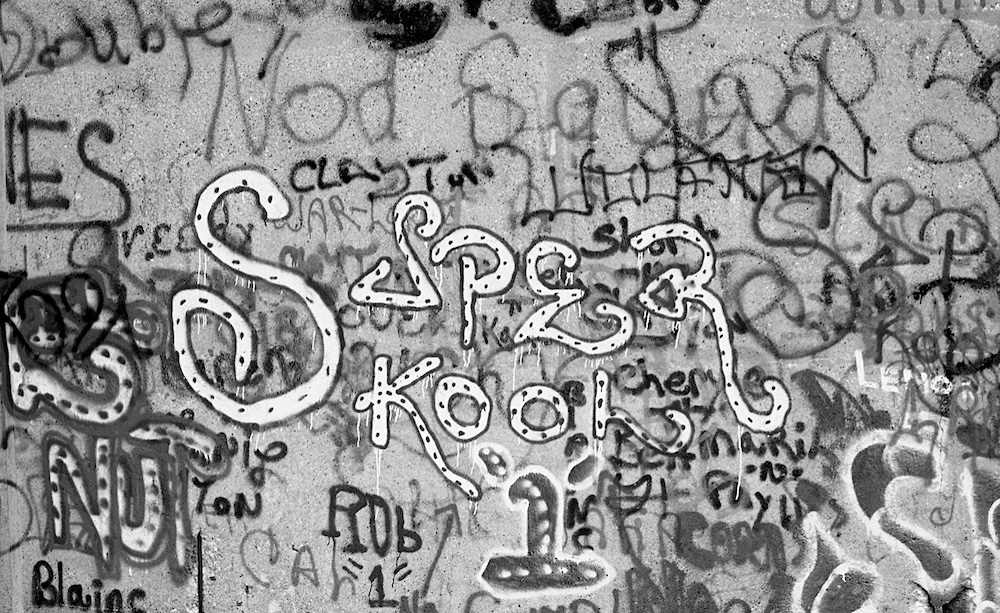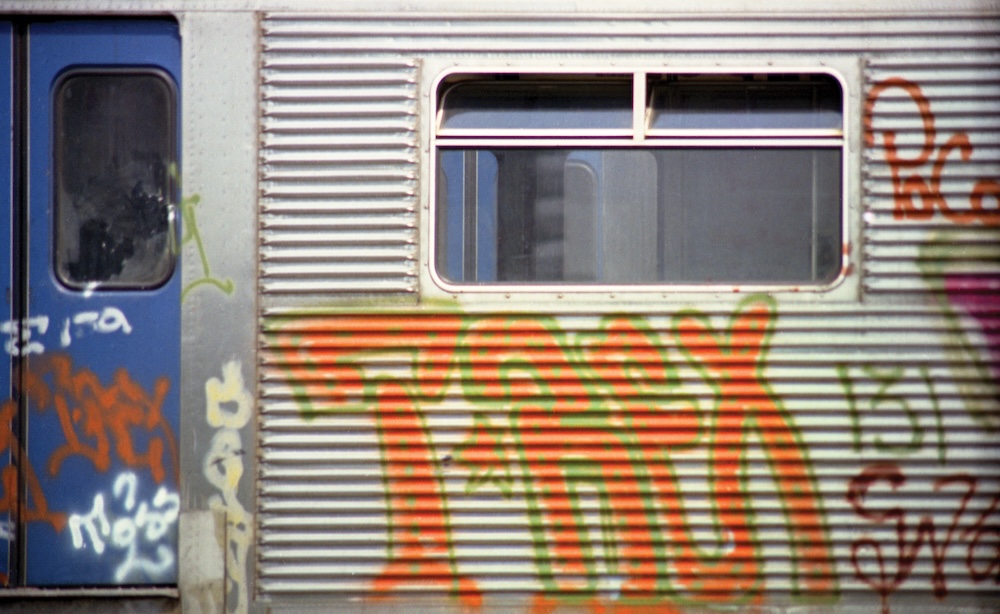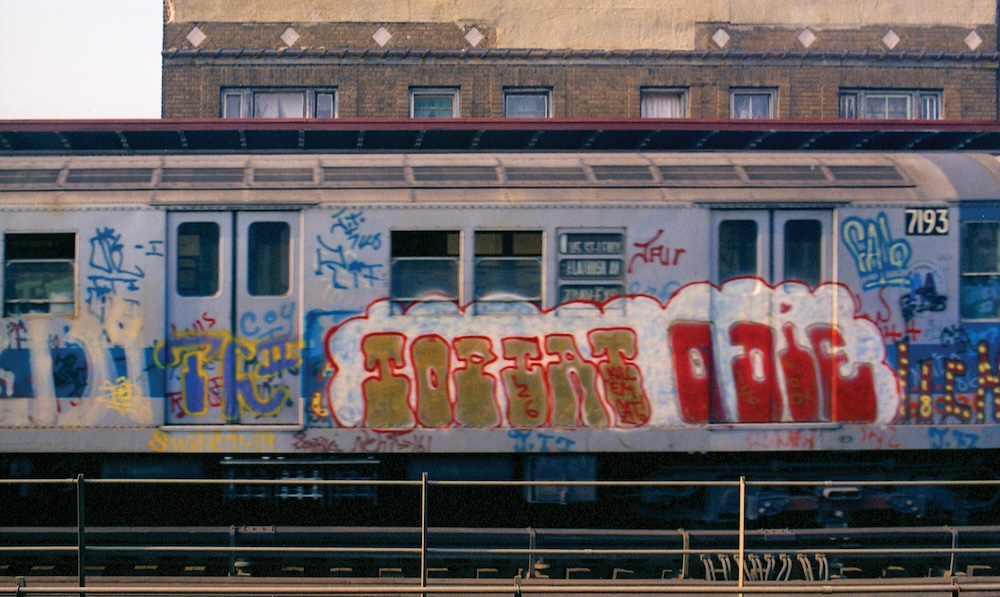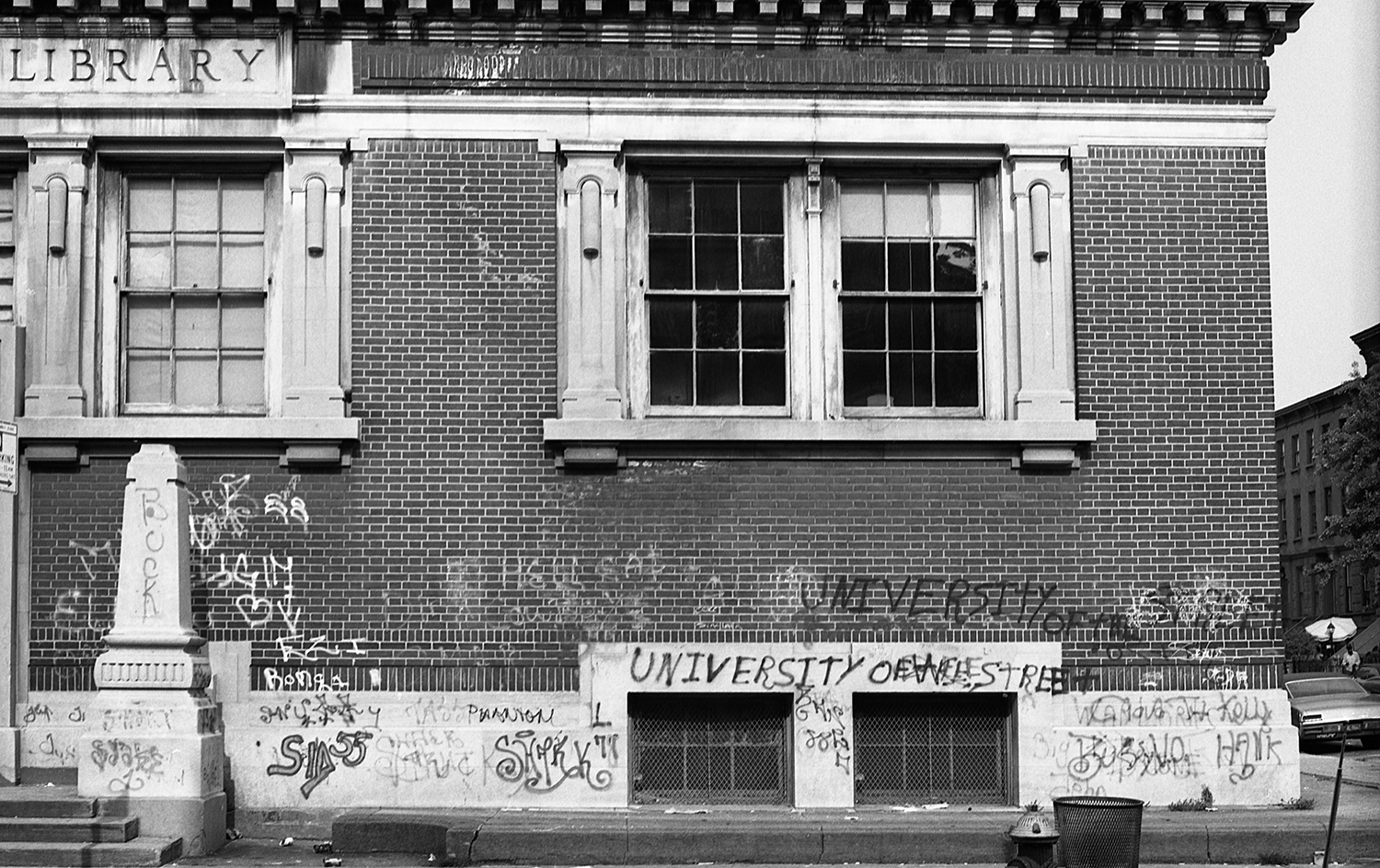In the summer of 1972, a 29-year old Gordon Matta-Clark began to photograph NYC's exploding graffiti movement. There are many significant things to consider here. One, this pre-dates the style we would begin to recognize as "graffiti" as documented in later books like Subway Art. This is an innocent time, an origin story, and Matta-Clark was capturing it with the sense innocence but acute interest. Matta-Clark himself was approaching architecture and urban space as the canvas for his own significant body of work. He is known now, famous for, his site-specific works, claiming unused or forgotten space, and transforming into something different. He was socially engaged, a rebel, an activist. Space and how to use and who uses it was important. And maybe that is why Gordon Matta-Clark turned his attention to documenting graffiti and the way the wall writers were using and claiming space, because that was so vital to his own practice. For such a renowned artist to explore graffiti in its infancy, was quite extraordinary.
On view at BEYOND THE STREETS and their CONTROL Gallery from March 1—April 13, 2024, Graffiti Archive 72/73 is a curated selection from Gordon Matta-Clark's archives that showcases over 200 photographs, many of which have never been revealed to the public until now. As Carlo McCormick wrote in a new 408-page hardbound Gordon Matta-Clark book featuring 550+ images, including photos from the exhibition, published by BTS, "Existing as a time capsule and comprehensive record of emergent styles and important writers in the golden age of New York City graffiti, the very fact that this collection was created by one of the most influential artists of the city in effect ratified graffiti at a time when it was belittled and even vilified."
In a way, this show is about graffiti, but perhaps more so the curiousity and interest of how the urban landscape forms in the eye and work of Matta-Clark. As vital as these photos are to the history of graffiti and its incredible explosion as an art form the world over just a few years after these were taken, this is also at the heartbeat of what Matta-Clark's life work was. This is about taking space, using space, owning space, rebelling against a system but also reclaiming a system. This show reminds us of the roots of graffiti, why it remains an important voice of youth and rebellion but also why taking space is so vital to the infrastructure of the people's fight to maintain a voice in their own neighborhoods. —Evan Pricco



